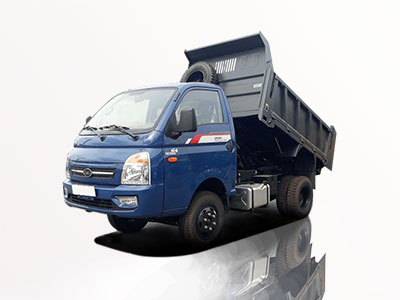Setting up a bucket truck properly is essential for ensuring safety and efficiency in aerial work. Whether you’re performing maintenance on utility poles, trimming trees, or conducting inspections, a well-executed bucket truck setup can make a significant difference in productivity. In this comprehensive guide, we will walk you through the steps involved in a bucket truck setup, best practices to follow, common challenges, and ways to overcome them.
Understanding Bucket Trucks
What is a Bucket Truck?
A bucket truck, also known as an aerial lift, is a specialized vehicle equipped with an extendable arm and a bucket that allows workers to reach elevated areas safely. These trucks are commonly used in various industries, including telecommunications, construction, and maintenance of overhead utilities.
Types of Bucket Trucks
Bucket trucks come in different configurations to suit various tasks:
- Telescopic Bucket Trucks: Feature a fixed arm with an extendable boom for vertical reaches.
- Articulating Bucket Trucks: Utilize a jointed arm that allows for more flexibility around obstacles.
- Track-Mounted Bucket Trucks: Designed for off-road capabilities, suitable for difficult terrains.
Preparing for Bucket Truck Setup
Choosing the Right Bucket Truck
The first step in effective setup is selecting the appropriate bucket truck for your task. Consider the following factors:
| Factor | Description |
|---|---|
| Height Requirement | Determine the maximum height you need to reach for your task. |
| Weight Capacity | Ensure the truck can handle the combined weight of the operator and materials. |
| Terrain Conditions | Evaluate the working environment for stability, slope, and accessibility. |
Safety Gear and Equipment
Before starting, it’s vital to equip yourself and your team with the necessary safety gear:
- Hard hats
- Safety harnesses
- High-visibility vests
- Protective eyewear
- Non-slip work gloves
Step-by-Step Bucket Truck Setup Process
1. Site Assessment
Begin by conducting a thorough site assessment. Check for overhead hazards such as power lines, trees, and building structures. Ensure the ground is stable and level for the bucket truck to park safely.
2. Positioning the Truck
Proper positioning is crucial. Follow these steps:
- Align the truck parallel to the work area.
- Ensure the vehicle’s outriggers are fully extended.
- Verify that the boom can reach the work area without obstruction.
3. Stabilizing the Truck
Outrigger Setup: If your bucket truck has outriggers, deploy them following the manufacturer’s guidelines. This adds stability and prevents tipping. Always ensure the ground underneath is stable.
4. Pre-Operation Checks
Conduct a series of pre-operation checks:
- Inspect the boom for any visible damages.
- Check the hydraulic fluid levels.
- Examine the bucket for wear and functioning latches.
- Test all controls for proper operation.
5. Safety Briefing
Before beginning work, conduct a safety briefing with all team members on-site. Discuss potential hazards, communication methods, and emergency procedures.
6. Communicating Effectively
Establish a clear method of communication between the ground crew and the operator in the bucket. Use hand signals or radios, ensuring everyone knows and understands the signs used during the task.
Best Practices during Bucket Truck Operations
Working Safely from the Bucket
When in the bucket, always prioritize safety:
- Attach your safety harness to the bucket’s designated anchor points.
- Never exceed the weight limit of the bucket.
- Maintain three points of contact while working.
Routine Maintenance and Inspections
Regular maintenance is key to ensuring that your bucket truck operates safely:
- Perform daily inspections of hydraulic systems.
- Check for leaks and adjust fluid levels as needed.
- Schedule professional inspections at regular intervals.
Emergency Procedures
Have emergency procedures in place for potential accidents:
- Establish quick access to first aid kits and emergency services.
- Train employees to handle medical emergencies effectively.
- Conduct regular drills to ensure readiness for potential scenarios.
Common Challenges in Bucket Truck Setup
Hazardous Weather Conditions
Bad weather can compromise safety. Follow these guidelines:
- Monitor weather forecasts regularly.
- Avoid working in high winds, rain, or lightning.
Navigating Obstacles
On-site obstacles such as trees and structures can hinder operations. Use articulating bucket trucks to maneuver around obstacles if necessary.
Real-Life Examples of Successful Bucket Truck Setup
Utility Maintenance
A local utility company used a bucket truck to replace overhead power lines. After conducting a thorough site assessment and positioning the truck correctly, they completed the task efficiently, minimizing outages.
Tree Trimming
A landscaping business effectively used an articulating bucket truck to trim high branches. By ensuring proper communication and safety practices, they maintained safety and completed the work without issue.
Conclusion
Implementing a well-structured bucket truck setup is critical to performing aerial work safely and efficiently. By following the steps and best practices outlined in this guide, you can ensure a successful operation for various tasks. Remember to prioritize safety, conduct regular inspections, and plan effectively to overcome potential challenges.
Frequently Asked Questions (FAQ)
How often should a bucket truck be inspected?
A bucket truck should be inspected at least once a year by a qualified service provider, and daily pre-operation checks should be performed by the operator.
What safety gear is required when using a bucket truck?
Essential safety gear includes hard hats, safety harnesses, high-visibility clothing, and protective eyewear.
Can anyone operate a bucket truck?
No, bucket trucks should only be operated by trained and certified personnel to ensure safety and compliance with regulations.
What is the weight limit for a typical bucket truck?
The weight limit varies by model but generally ranges from 300 to 600 pounds, including the operator and any tools or materials.
Are there specific training requirements for bucket truck operators?
Yes, operators must undergo specialized training that includes safety protocols, vehicle operation, and emergency procedures.
How do I choose the right bucket truck for my job?
Evaluate the job requirements, including height, weight capacity, and terrain, to select a bucket truck that meets your specific needs.





